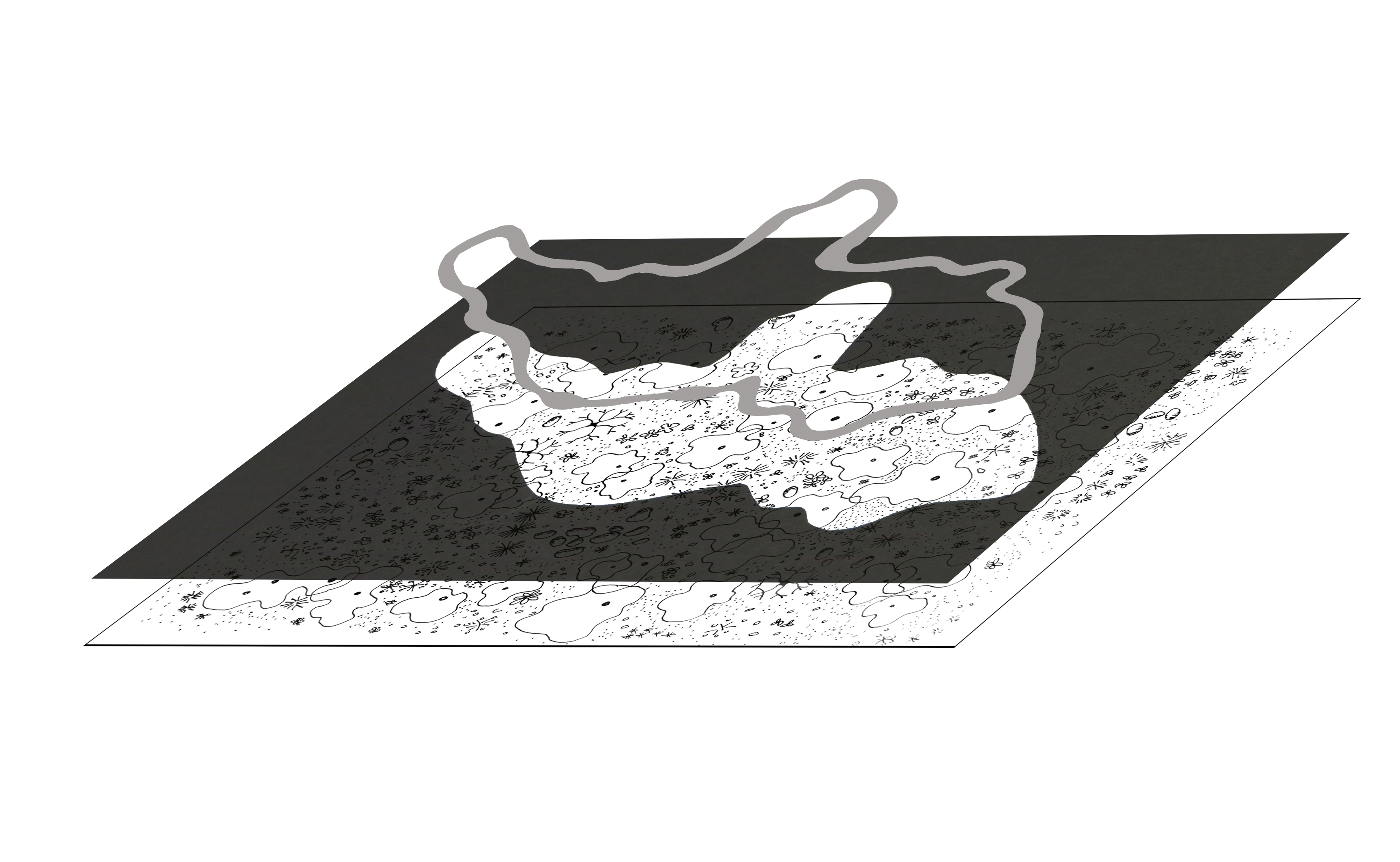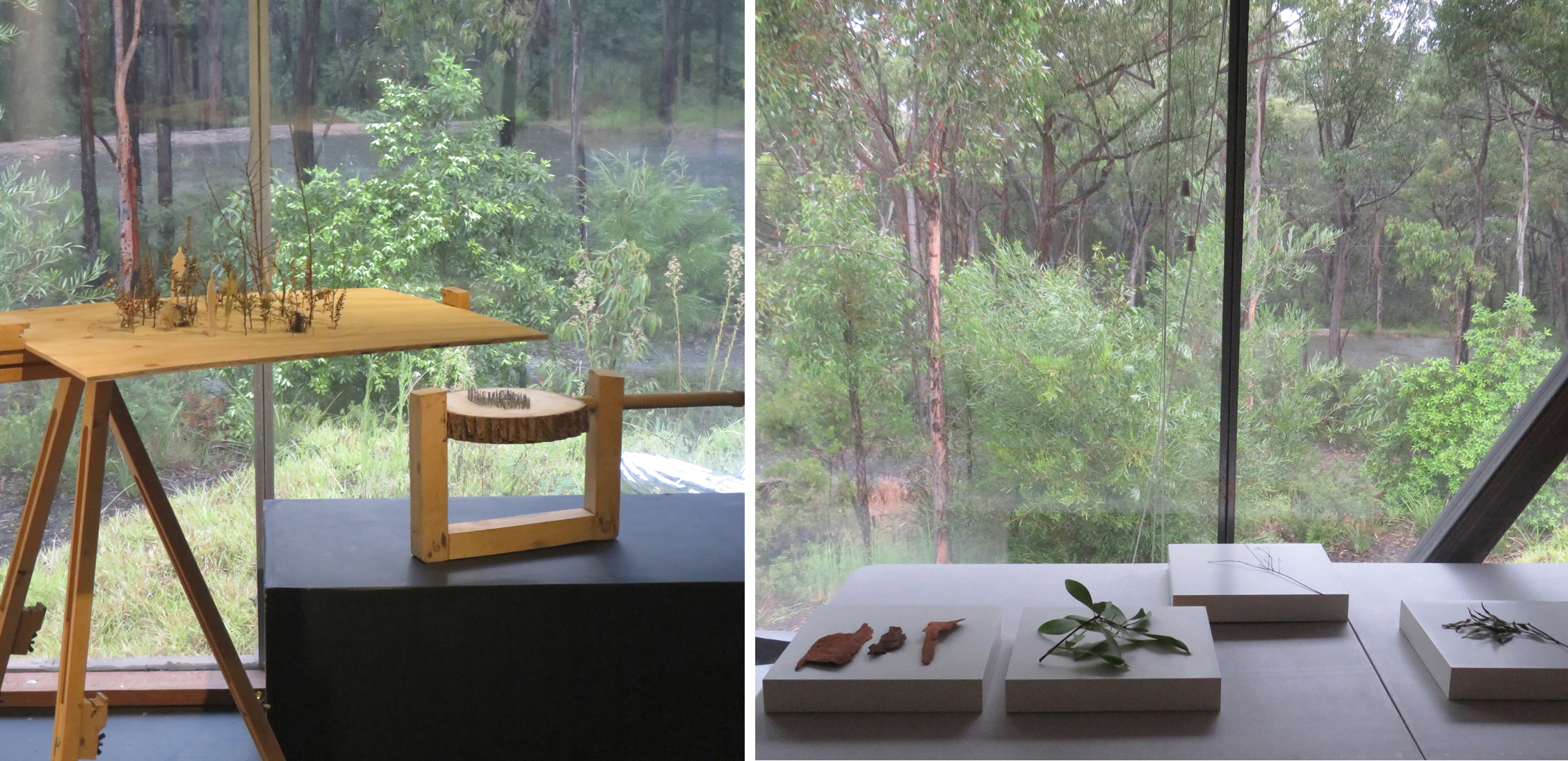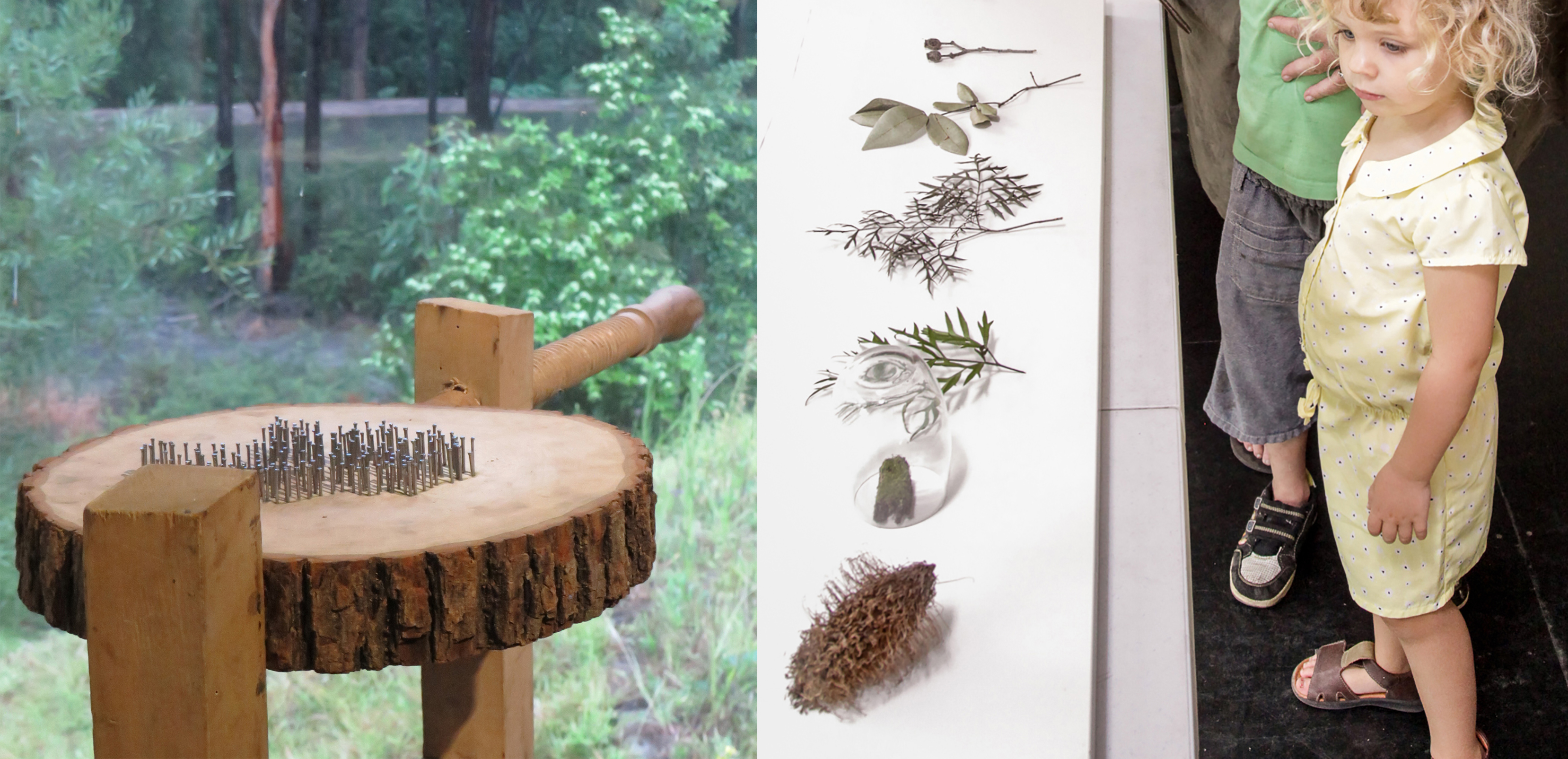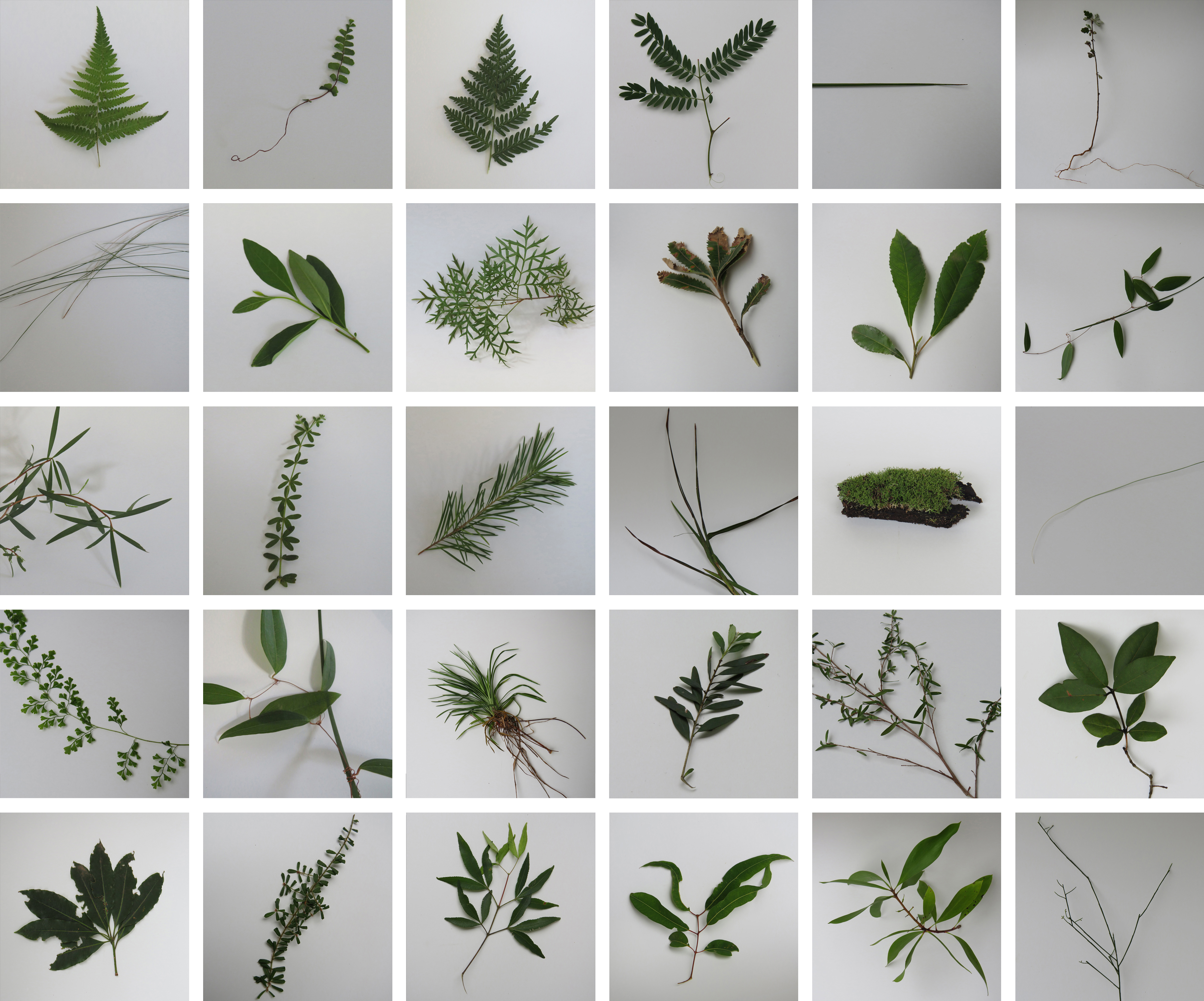BOTANICAL ISLAND
Living- Lab Greater Blue Mountains, Australia.
The intervention project is located within the limits of Wollemi National Park, in the UNESCO’s World Heritage listed Greater Blue Mountains. An exceptional area of Australia recognized for its fragile and ecological diversity with a wide range of habitats.

Conceptual drawing of island and path
Illustration: x-studio, Iván Juárez
The intervention is proposed as a -living laboratory-, through a conductive thread that weaves different narratives of the landscape. Along the path, the intervention delimits a fragment of forest, as a botanical island with a significant biodiversity in which various endemic species coexist together.
The trail offers diverse approximations to the natural environment as well as the sensory experience of touching, smelling, observing and listening. In this way, the intervention proposes a symbolic delimitation of a pristine forest and the enhancement of its biodiversity, where the path suggests a multilayered journey, weaving together botany and senses.

Botanical island, living-lab
Photography: x-studio, Iván Juárez
With the intention of increasing the landscape experience and environmental awareness, the project applies interdisciplinary methods of approximation to the site, proposing links between sensory approach and didactic processes. The intervention is complemented by the -Research Lab-, a space of knowledge and dissemination where the experiential site work is exposed: mappings, cartographies, videos, sound recordings, sketches, photographs, models, as well as the interactive herbarium.

Research Lab, exhibition models and botanical samples
Photography: x-studio, Iván Juárez
In order to collect, identify and disseminate the different species that shape the Botanical Island, the herbarium is exhibited as a framework in which local community members participate and interact, sharing their own knowledge about the plants identified on the site: uses, applications, cultural meanings, relationships and personal stories. Among the flora that cohabits this fragment of landscape are several varieties of eucalyptus and angophoras, associated with a variety of cedars, acacias, turpentines, ferns, herbs, mosses, shrubs and wildflowers.

Research Lab, herbarium exposition
Photography: BigCi

Research Lab, exhibition models and botanical samples
Photography: x-studio, Iván Juárez
Some examples of plants that you can find at the herbarium are:
Austrodanthonia caespitosa, Banksia serrata, Leucopogon setiger, Pultenaea scabra, Ceratopetalum gummiferum, Dodonaea triquetra, Pittosporum undulatum, Cyathea australis, Jacksonia scoparia, Asplenium flabellifolium, Pteridium esculentum, Persoonia linearis, Geebung esculentum, Lomatia silaifolia, Tetratheca ericifolia, Xanthosia pilosa, Stylidium productum, Lindsaea microphylla, Syncarpia glomulifera, Eustrephus latifolius, Dianella caerulea, Leptospermum trinervium, Persoonia mollis, Austrodanthonia caespitosa, Eustrephus latifolius, Elaeocarpus reticulatus, Xanthorrhoea y Acacia elata.

Herbarium Fotografía / Photography: x-studio, Iván Juárez








